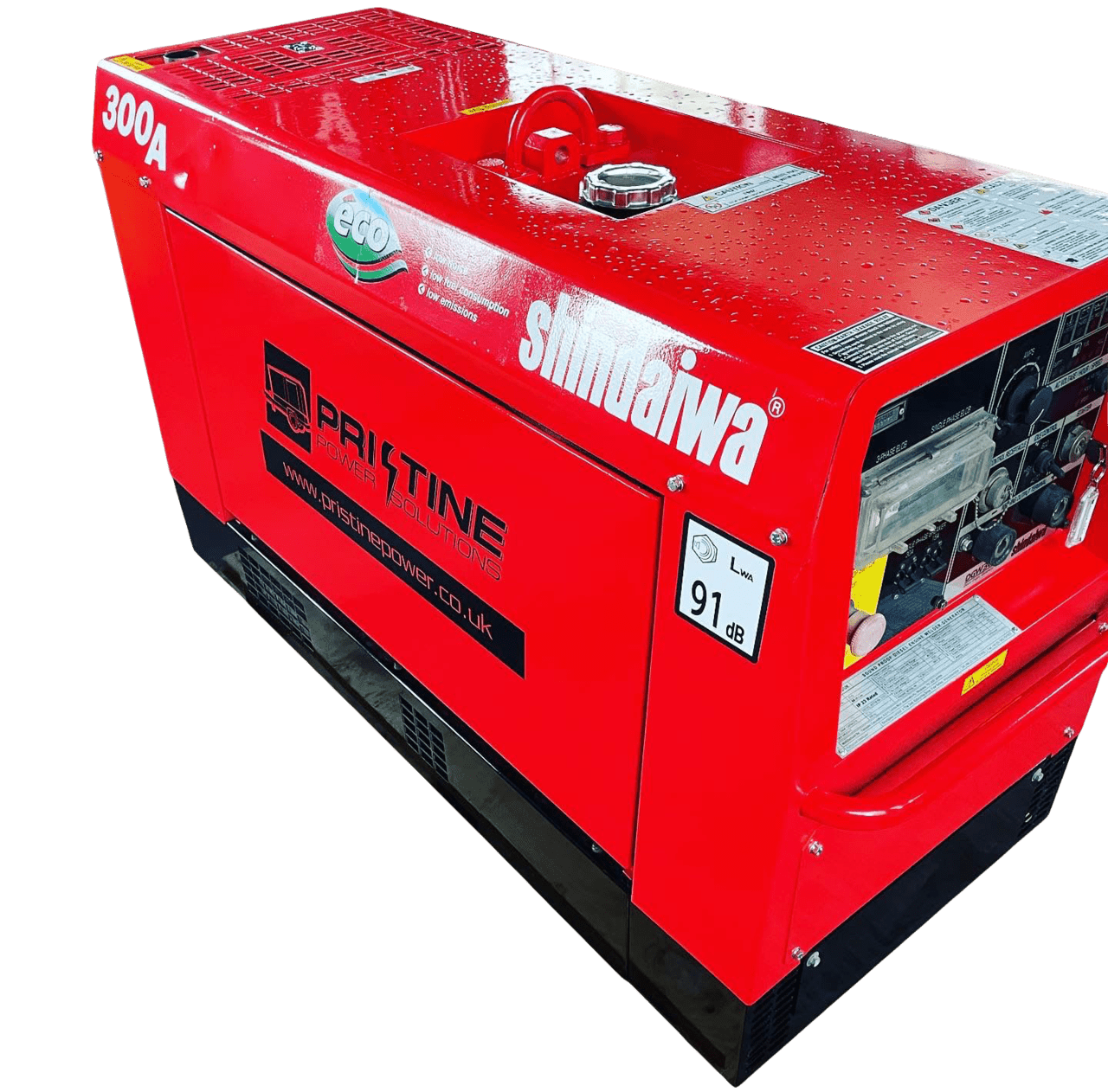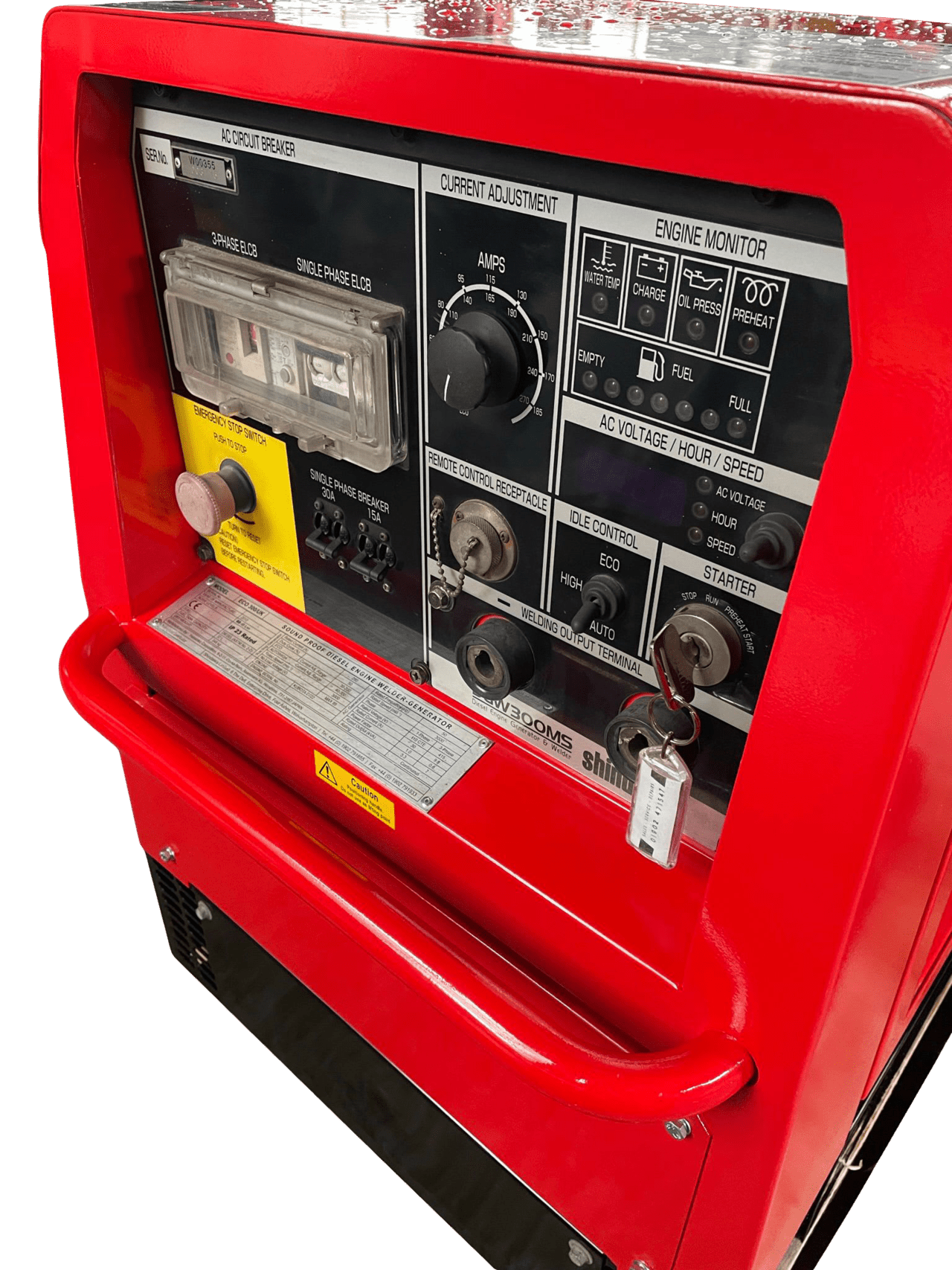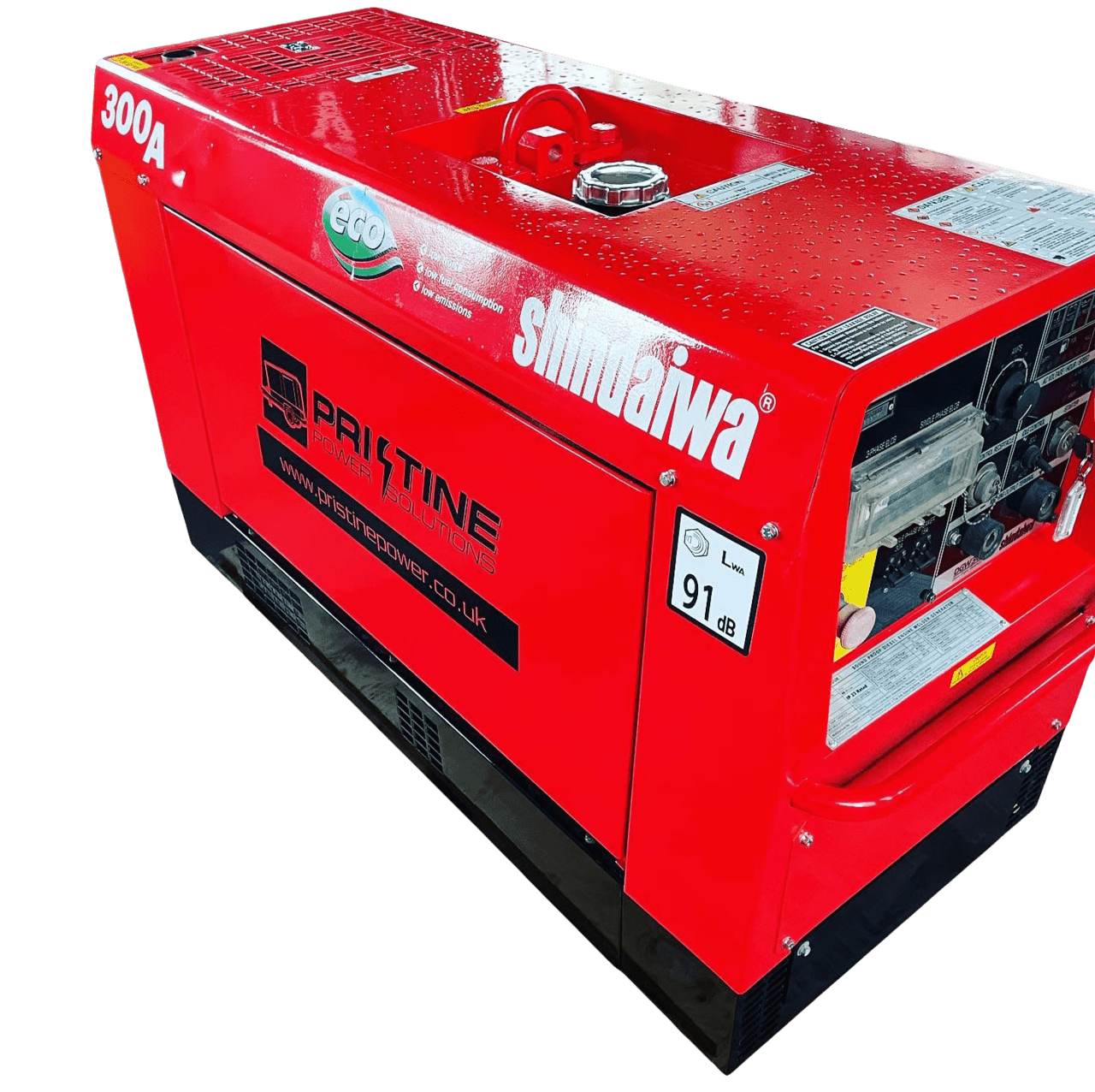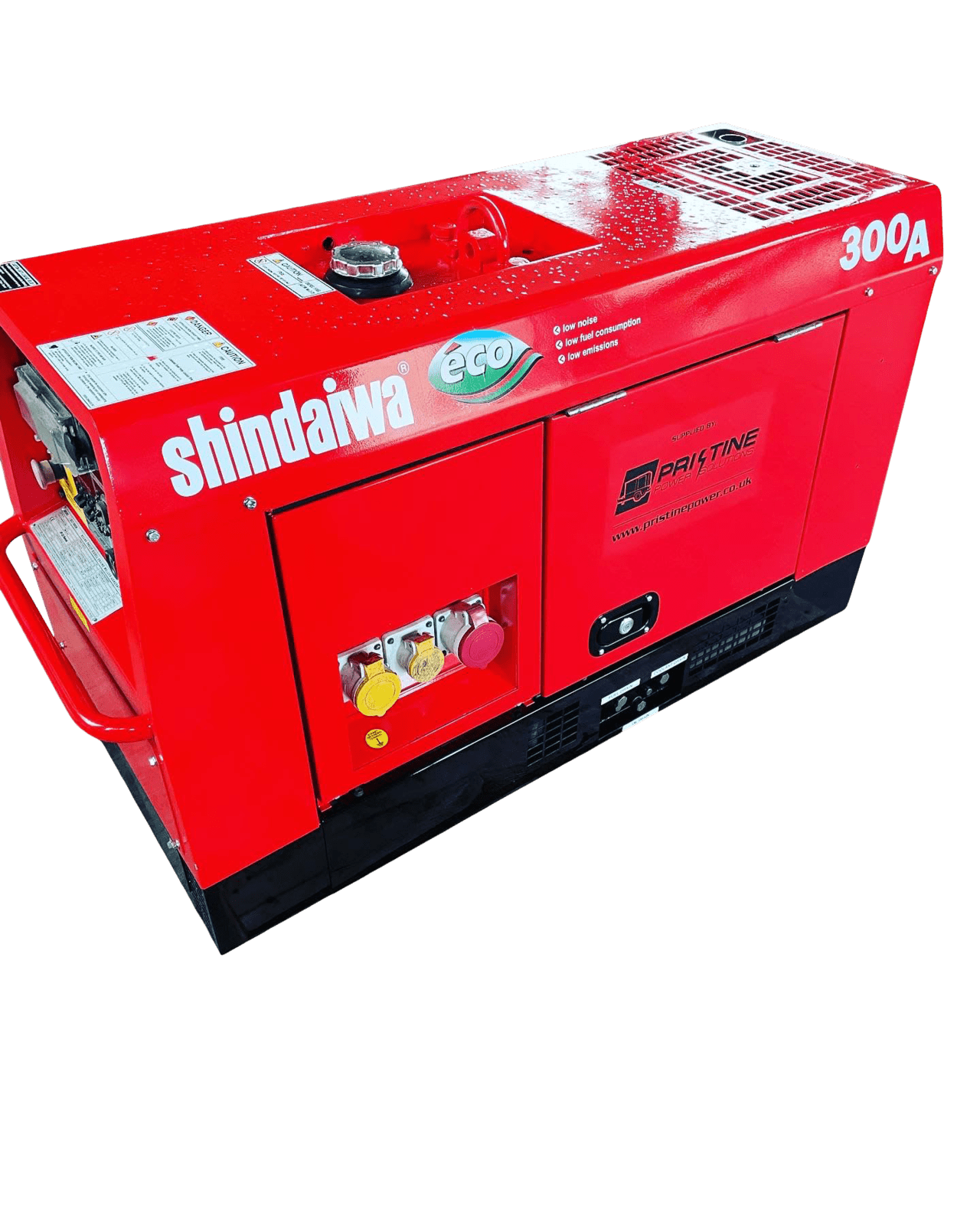Top Five Shindaiwa Power Generator Tips
Top Five Shindaiwa Power Generator Tips
Are you tired of dealing with a faulty Shindaiwa power generator? You're not alone! With a few simple tips and tricks, you can get your generator up and running in no time. From checking fuel levels to testing the generator, we've got you covered. In this article, you'll learn how to troubleshoot common issues and prevent costly repairs. So, let's dive in and get your generator running smoothly and efficiently!
Key Takeaways:
Here are the top five Shindaiwa power generator tips to keep your equipment running smoothly:
- Fuel Levels Matter: Ensure your generator has enough fuel, and check the quality of the fuel to avoid clogging the engine.
- Oil Levels are Crucial: Check your oil levels regularly, and follow the manufacturer's guidelines for oil changes to prevent damage to your generator.
- Don't Overload Your Generator: Be mindful of your generator's load capacity, and avoid overloading it to prevent damage and ensure safety.
By following these simple tips, you can prevent common issues with your Shindaiwa power generator and ensure it runs efficiently when you need it most. Remember to always prioritize safety and seek expert help if you're unsure about any repairs.
How to Troubleshoot Your Generator
While your generator is designed to provide reliable power, it's not immune to problems. Before calling a repair service, try troubleshooting the issue yourself. Do not forget, safety first – if you're unsure or uncomfortable with any of the steps, it's best to seek professional help.
Check Your Fuel Levels
Now, let's start with the basics. Make sure you have enough fuel in your generator. It's surprising how often this simple oversight can cause issues. Check the fuel quality too, as degraded fuel can clog your engine. If you're unsure, it's always best to err on the side of caution and call a repair service.
Check Your Oil Levels
Troubleshoot your oil levels by checking the dipstick. If it's low, add oil to reach the recommended level. Don't forget to check your manufacturer's guidelines for oil change frequency and follow their step-by-step instructions.
For instance, neglecting regular oil changes can lead to engine damage, so stay on top of this crucial maintenance task.
Check The Generator's Load
Now, let's talk about load management. Ensure you're not overloading your generator, as this can cause damage and even be dangerous. Each generator has a maximum load capacity, so be mindful of this when powering appliances. Do not forget, appliances require more power during start up than when running, so plan accordingly.
This is especially important, as overloading can lead to serious safety risks and generator damage. To avoid this, prioritize your appliances and add them gradually to prevent overload.
Common Issues and Solutions
Some of the most common issues that you may encounter with your Shindaiwa power generator can be easily resolved with a few simple checks and adjustments.
Overloading Your Generator
Generator overload is a common problem that can occur when you connect too many appliances to your generator, exceeding its maximum capacity. This can lead to serious damage to your generator and even cause a fire. To avoid this, make sure to check your generator's power output and only connect appliances that are within its capacity.
Fuses And Circuit Breakers
Assuming your generator is running but not producing any power, it's likely due to a blown fuse or tripped circuit breaker. Don't ignore this issue, as it can cause further damage to your generator. Simply reset your generator's breaker and replace any blown fuses.
A faulty fuse or circuit breaker can be a sign of a more underlying issue, so it's imperative to investigate the cause before restarting your generator. Take the time to identify the root cause to prevent it from happening again.
Testing Your Generator
Clearly, testing your generator is crucial to ensure it's functioning correctly. Start the generator and check for any abnormal noises, vibrations, or leaks. Make sure it's producing the correct voltage output. Perform a load test by connecting electrical devices to simulate real-world usage.
Circuit problems can be tricky to diagnose, but by following these steps, you can identify and resolve common issues with your Shindaiwa power generator. Be mindful of, if you're unsure or uncomfortable with any repairs, it's always best to consult a professional.
What If My Generator Isn’t Producing Any Power?
Your Shindaiwa power generator is not producing any power, and you're left wondering what's going on. Don't panic! There are several reasons why this might be happening, and some of them are easily fixable. Let's probe some possible causes and solutions.
Internal Setting Problems
Power issues can often be traced back to internal setting problems. If your generator is running but not producing power, it's possible that there's an issue with the internal settings. This could be due to a faulty voltage regulator, a malfunctioning capacitor, or other internal components. To diagnose the problem, you'll need a voltmeter and ammeter to check the readings against the manufacturer's specifications.
Motor Damage
Any damage to the motor can prevent your generator from producing power. If you suspect motor damage, it's necessary to address the issue promptly to avoid further damage.
A damaged motor can be caused by various factors, including overheating, worn-out bearings, or electrical surges. If you're not experienced in generator repairs, it's crucial to seek the help of a professional to avoid causing more harm. Keep in mind, attempting to repair a generator without proper training and experience can be dangerous and even lead to serious injuries or fatalities.
How to Prevent Generator Repairs
For any generator owner, the last thing you want to deal with is a broken machine that leaves you without power. Fortunately, there are steps you can take to prevent generator repairs and ensure your machine runs smoothly and efficiently.
Investing in Generator Maintenance Services
Now, more than ever, it's crucial to invest in generator maintenance services. By doing so, you'll be taking proactive steps to keep your generator in top condition, avoiding costly repairs and ensuring you get the most out of your investment.
Proper Servicing of Your Generator
Generator maintenance is key to preventing repairs. Make sure to regularly check your fuel levels, oil levels, and load capacity to avoid common issues that can lead to breakdowns.
Understanding the importance of regular servicing cannot be overstated. Failing to do so can result in damage to your generator, leading to costly repairs or even complete replacement. By staying on top of maintenance, you'll avoid these issues and ensure your generator is always ready when you need it.
When to Call a Professional
Despite your best efforts to troubleshoot and repair your Shindaiwa power generator, there may come a time when you need to call in a professional. It's necessary to know when to seek expert help to avoid further damaging your generator or putting yourself and others at risk.
Signs You Need Expert Help
Any signs of complex issues, such as unusual noises, vibrations, or leaks, indicate that you need expert assistance. If you've tried the troubleshooting tips and your generator still isn't working, it's time to call a professional.
Risks of DIY Repairs
An inexperienced attempt to repair your generator can lead to serious safety risks, including electrical shock, fire, or even physical harm. Additionally, DIY repairs can cause further damage to your generator, resulting in costly repairs or even complete replacement.
The risks of DIY repairs are too great to ignore. Without proper training and experience, you may inadvertently create a hazardous situation or exacerbate the problem, leading to more extensive and expensive repairs down the line. It's always better to err on the side of caution and seek professional help when dealing with complex generator issues.
Tips for Safe and Efficient Generator Use
Now that you have your Shindaiwa power generator up and running, it's necessary to ensure safe and efficient use to prolong its lifespan and prevent accidents. Here are some valuable tips to keep in mind:
- Always follow the manufacturer's guidelines and instructions for operation, maintenance, and repair.
- Keep the generator in a well-ventilated area, away from windows, doors, and any openings to prevent carbon monoxide buildup.
- Avoid overloading the generator by not exceeding the recommended power output.
- Regularly check and maintain the generator's oil and fuel levels to prevent engine damage.
- Store fuel properly in a cool, dry place, away from heat sources and open flames.
The key to safe and efficient generator use lies in being proactive and taking the necessary precautions to prevent accidents and prolong the lifespan of your Shindaiwa power generator.
Regular Maintenance
If you want to ensure your generator runs smoothly and efficiently, regular maintenance is crucial. Check your generator's oil and fuel levels regularly, and perform routine inspections to identify potential issues before they become major problems.
Avoiding Overload
Tips for avoiding overload include calculating your power needs, prioritizing necessary appliances, and avoiding simultaneous startup of multiple devices.
Avoiding overload is critical to prevent damage to your generator and ensure safe operation. Keep in mind, it's better to err on the side of caution and prioritize your power needs to avoid overwhelming your generator.
Storing Fuel Properly
Assuming you have a backup plan in place, storing fuel properly is necessary to ensure safe and efficient generator use.
For instance, always store fuel in a cool, dry place, away from heat sources and open flames. Additionally, make sure to label and date your fuel containers to ensure you're using the freshest fuel possible.
To wrap up
On the whole, by following these top five Shindaiwa power generator tips, you'll be well on your way to keeping your generator running smoothly and efficiently. Remember to check your fuel and oil levels, monitor the load, inspect fuses and circuit breakers, and test your generator regularly. By taking these simple steps, you'll not only prevent costly repairs but also ensure your safety and the safety of those around you. So, go ahead, take control of your generator's maintenance, and enjoy the peace of mind that comes with knowing you're prepared for any situation.
Q: What is the most common reason why my Shindaiwa power generator won't start?
One of the most common reasons why your Shindaiwa power generator won't start is because of low fuel levels. This is especially true if you haven't used your generator for an extended period. Make sure to check your fuel levels and the quality of the fuel, as it can degrade over time. If you're unsure, it's always best to consult a professional generator repair service.
Q: How often should I check and change the oil in my Shindaiwa power generator?
It's imperative to check your oil levels regularly, especially if your generator doesn't have an automatic oil-checking feature. Use a dipstick to check the oil levels, and add oil as needed. Be sure to follow the manufacturer's guidelines for oil changes, which can usually be found in the user manual. Remember to change your oil regularly to keep your generator running smoothly and efficiently.
Q: Why does my Shindaiwa power generator keep shutting down?
Overloading your generator is a common reason why it may shut down. Make sure you're not exceeding the recommended electrical load, as this can damage your generator and pose a safety risk. Also, be aware that appliances require more power when starting up compared to when they're in operation. To avoid overloading, remove unnecessary appliances and add them back gradually as the generator settles into operating mode.
What should I do if my Shindaiwa power generator is running but not producing any power?
If your generator is running but not producing any power, it may be due to a blown fuse or tripped circuit breaker. Try resetting the breaker and replacing any blown fuses. If the problem persists, it's best to consult a professional generator repair service to diagnose and fix the issue.
How can I prevent generator repairs and ensure my Shindaiwa power generator runs smoothly?
One of the best ways to prevent generator repairs is by investing in regular maintenance services. This includes checking and changing the oil, cleaning the air filter, and inspecting the spark plug. By keeping your generator well-maintained, you can prevent problems from arising and ensure it runs smoothly when you need it most. Additionally, consider consulting a professional generator repair service if you're unsure about performing maintenance tasks yourself.





